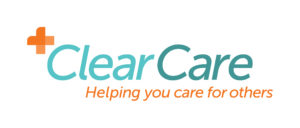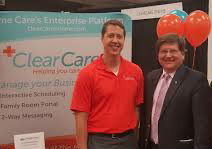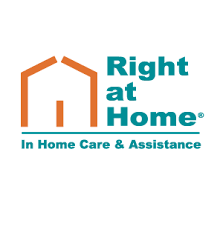By Stephen Tweed aka “Dataman” 
Home Care Industry research is critical. We need more facts and data to support our belief that taking care of clients in their homes really matters.
By now, you know that I love doing research and tracking trends in the home care industry. As a matter of fact, my friends from CAPS- The Canadian Association of Professional Speakers – have named me “Dataman” and their past President Valerie Cade even made me a Dataman cape.
So who better than “Dataman” to dig into new industry-leading research conducted by Harvard Medical School and supported by home care software leader ClearCare, and home care franchising leader Right At Home.
The research conducted by Harvard used a simple caregiver checklist at the end of each shift to monitor changes in condition of the client that could lead to medical complications and a trip back to the hospital. The checklist was embedded into scheduling software provided by ClearCare, and built into their telephony system. When clocking out at the end of the shift, caregivers answer the questions on the checklist. The researchers developed at advanced triage system to follow up with patients who showed a change in condition.
The checklist and ClearCare system was tested by 22 Right At Home offices across the country.
Using Telephony To Monitor Care is Not New 
Using telephony tied to your home care scheduling software to monitor the care provided to a client is not new. ClearCare and other software companies have had post-shift questions built into their telephony systems for years. In our view, any home care company that is not using an up-to-date software system with telephony for time and attendance tracking is way behind the times.
What is different is having researchers from a noted medical school like Harvard refine the design of the checklist and then monitor its use to measure the results statistically. Using the telephony system to monitor caregiver activity and track client conditions enables the researchers to give us scientific proof that home care matters.
For this study, caregivers from 22 Right-At-Home Offices used their ClearCare system to respond to a short checklist at the end of each shift. The purpose of the checklist is to spot changes in a client’s medical condition, identify problems, and potentially prevent the client from going into the hospital. The data from the study show:
- 22 Right At Home Offices participated in the study
- 7.6 years was the average age of the offices
- 110 clients are on service in each office
- 1,748 caregivers work in the 22 offices, or an average of 79.5 per office
- 52% of clients received personal care, 38% received companion care, and 10% nursing care
- 2,391 clients received care over 273,278 shifts
- 4,541 changes in condition showed a change after 2% of shifts
The most common changes in condition observed by caregivers in the study were:
- 40% “seemed different” in talking or reduced alertness
- 20% were mobility changes in standing or walking
- 16% were skin condition changes
- 14% were changes in eating or drinking
- 10% were toileting changes
- 14% of clients were hospitalized during the study
The Harvard researchers concluded that the checklist is a valuable tool in identifying changes in the client’s condition and taking follow up action. It is too early in the study to determine whether or not this tool will help reduce hospitalizations or cut the cost of providing health care. They said, “The pilot demonstrated the opportunities and challenges in innovating is a little studied space like in-home care.”
ClearCare CEO Shares His Insights 
To get more insights into the value of this research to the home care industry, we followed up with Geoff Nudd, the CEO of ClearCare. Geoff made some really important points.
- In-home personal care is outside the healthcare ecosystem. We have local data to prove the value of in-home care, but that’s not enough credibility to earn a seat at the table.
- The study shows that caregivers can accurately alert changes in condition without significant false positives.
- Simple training of caregivers and care managers improved their ability to identify changes in condition
- While the data show a 14% hospital admission rate, it’s too early to claim that this system can reduce re-hospitalizations, improve care, or save costs.
We also talked with Derek Jones, Vice President of Marketing at ClearCare who told us the team spent months working with Harvard to determine the right questions to ask at the end of the shift. “As you know”, said Derek, “many caregivers are English as a second language. There is much debate around the industry whether a caregiver can actually determine or predict an admission. The teams involved in the research scrutinized all of the available research and Harvard’s background with population health to ask the right questions.”
ClearCare, Right At Home, and Harvard built an Advanced Triage Routing based on the caregivers feedback so the office can respond quickly. That will be the foundation for the next phase of the project.
What’s Next
The Harvard researchers will move into the next phase of the research which is to cross reference Medicare claims data with the clients in this study and a control group. They will quantify the impact of home care on overall health care costs.
Geoff Nudd says, “We want to take the data to CMS, other payers, other providers, and pharma to show the impact of home care and how we can help reduce admissions. Then we want to look at how home care can be a preventative service for seniors who are at high risk with two or more chronic conditions, living at home along, and are taking 3 or more medications.”
Home Care Matters
Those of us who have been working in home care for decades know intuitively that home care matters. As the father of a 46 year old son who is physically disabled, lives in a wheel chair, and uses the services of home care on a daily basis, I can tell you personally about the value of home care to Jason, and to us as family caregivers. Having research like this will show statistically and scientifically that home care really matters.
Take a few minutes to Read the Study. Then we encourage you to support ClearCare and Right At Home as they continue to gather data to support our claim that home care makes a measurable difference in the lives of our clients and families.




